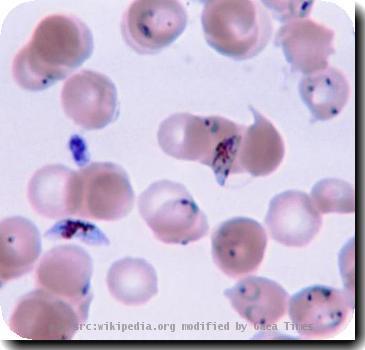UN: HIV epidemic peaked in 1996, number of infected almost unchanged since 2007
By Maria Cheng, APTuesday, November 24, 2009
UN: HIV outbreak peaked in 1996
GENEVA — The number of people worldwide infected with the virus that causes AIDS — about 33 million — has remained virtually unchanged for the last two years, United Nations experts said Tuesday.
Officials say the global epidemic probably peaked in 1996 and that the disease looks stable in most regions, except for Africa. Last year, HIV infections in sub-Saharan Africa accounted for 72 percent of all 2.7 million new HIV cases worldwide.
Daniel Halperin, an AIDS expert at Harvard University, said it was good news the rate of new infections was dropping and that access to AIDS drugs was helping to cut the death rate. Earlier this year, the U.N. announced there are now 4 million people on lifesaving AIDS drugs worldwide, a 10-fold increase in five years.
In the report by the World Health Organization and UNAIDS, the experts estimate there are now about 33.4 million people worldwide with HIV. In 2007, the figure was about 33.2 million. The numbers are based on a mathematical model and come with a margin of error of several million people.
With the U.N.’s confirmation HIV is now declining in most countries, some experts said the report should change the spending habits of international donors. Globally, HIV causes about 4 percent of all deaths, but gets about 23 cents of every public health dollar.
“We shouldn’t let this single disease continue to distort overall global funding, especially when bigger killers like pneumonia and diarrhea in developing countries are far easier and cheaper to treat,” said Philip Stevens, of International Policy Network, a London-based think tank.
In the report, U.N. officials wrote that “AIDS continues to be a major public health priority” and called for more funds to support their effort. Officials said the drugs have saved nearly 3 million lives.
People with HIV who start the drugs must continue indefinitely, so the cost of treating HIV will continue to rise, even as the epidemic fades. Prices could skyrocket if resistance develops and more expensive regimens are needed.
Whether previous U.N. initiatives are responsible for the epidemic’s downturn is uncertain. Some experts said the drop in HIV may simply be a result of the virus burning itself out, rather than the result of any health interventions.
Ties Boerma, a WHO statistics expert, said countries whose HIV prevalence declined dramatically, like Zimbabwe, were not always those that got the most AIDS money.
The report also noted that where treatment is available, rates of HIV are either stable or rising.
Elizabeth Pisani, an epidemiologist who once worked for UNAIDS, said when people with HIV don’t take their drugs exactly as prescribed, they have periods where they become infectious, giving the virus a chance to spread. Most people without treatment die before infecting many others.
“In theory, treatment may have an important preventative effect, but in practice, it can actually make things worse,” Pisani said. “We obviously can’t stop treatment, but we need to do a lot more on prevention.”
Stevens said the fact that AIDS peaked more than a decade ago suggests it is now time for the global community to prioritize other health problems.
Outside of the worst-affected countries such as South Africa, respiratory infections, heart disease and malaria are bigger killers.
“Against this backdrop, it is unjust that AIDS should commandeer such a disproportionate level of funding,” Stevens said.

